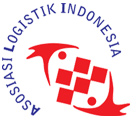Value Stream Mapping: The Path to Logistics Savings Part 2
Will Johnson
Value Stream Mapping (VSM) takes a 50,000-foot view of the business - from order creation to delivery - with the hopes of potential returns of up to 10 times the investment. It taps key resources, discusses the business in ways not previously considered, puts flow of information and materials into a visual format, and designs an outlined transformation plan needed to achieve improved performance.
The previous blog in this two-part series examined the first two of four distinct phases of the VSM process. It reviewed how Assessing and Planning help understand industry specific issues and the customer-specific value stream; and how a Go-No-Go meeting with decision makers determines if sufficient value will be gained from a VSM engagement.
Assuming such value exists, the next step is to…
Execute the Event. This two- to three-day collaborative event between the VSM facilitator, business experts, and key customer stakeholders starts with the creation of what some call the "as is" process, or the Current State Map. This map outlines the business processes the company's product/service goes through in order to create the desired output to their customers. It follows the processes from order creation to order delivery. Once the map is created, the team goes through a brainstorming exercise (preferably a silent brainstorm using sticky notes) to identify opportunities for improvement to remove waste from the value stream. Ideas are placed on the map next to the process which the idea seeks to address. Then all are discussed, clarified, de-duplicated, and categorized into themes. Those themes are then classified into three types of improvement actions (Just-Do-Its, Kaizens, and Projects). Next, those improvement actions are prioritized and ranked through a 9 Block exercise. Once the exercise is complete, the improvement actions are entered into the Lean Transformation Plan document. This document is used to track and monitor the progress of the identified prioritized actions.
Follow-Up. This process seeks to collect additional data as needed to increase confidence on solution set and value proposition, monitor savings, and - ultimately - to celebrate success. At the end of the process, the customer will have a digital version of the Current State Value Stream Map itself, a LEAN Transformation Plan in the form of an Excel document, and an understanding of how the VSM and the transformation plan will drive value across the organization. If the LEAN methodology is enacted, process improvements and productivity increases will lead to value stream cost reductions. With those cost gains, the organization can allocate resources to other vital areas of the business. A VSM event is not a one-off activity. Once the VSM has been completed, follow-up meetings are conducted on a monthly basis to review progress toward completion of the identified improvement actions on the LEAN Transformation Plan.
A few additional points to consider:
The application of VSM starts with leadership, which must be committed to making the changes identified by the VSM team. From identifying owners of each action and holding them and one another accountable for the transformation plan implementation, to investing in training and engaging their people, VSM is only as effective as the people implementing it.
As companies struggle to cut costs and drive process improvement, VSM can deliver real rewards. Value Stream Mapping can be a sophisticated exercise. But it's important to use the tool to help identify how to get better; don't let the tool use you by focusing on how to create the best looking map. The most effective Value Stream Mapping sessions result in tangible impact to the bottom line. In fact, most teams only look at the actual map one time and spend their energy on the implementation of the LEAN Transformation Plan. That is what many would consider a successful VSM effort.
Source:
http://blog.ryder.com/2015/08/value-stream-mapping-path-to-logistics-savings-part-2/









